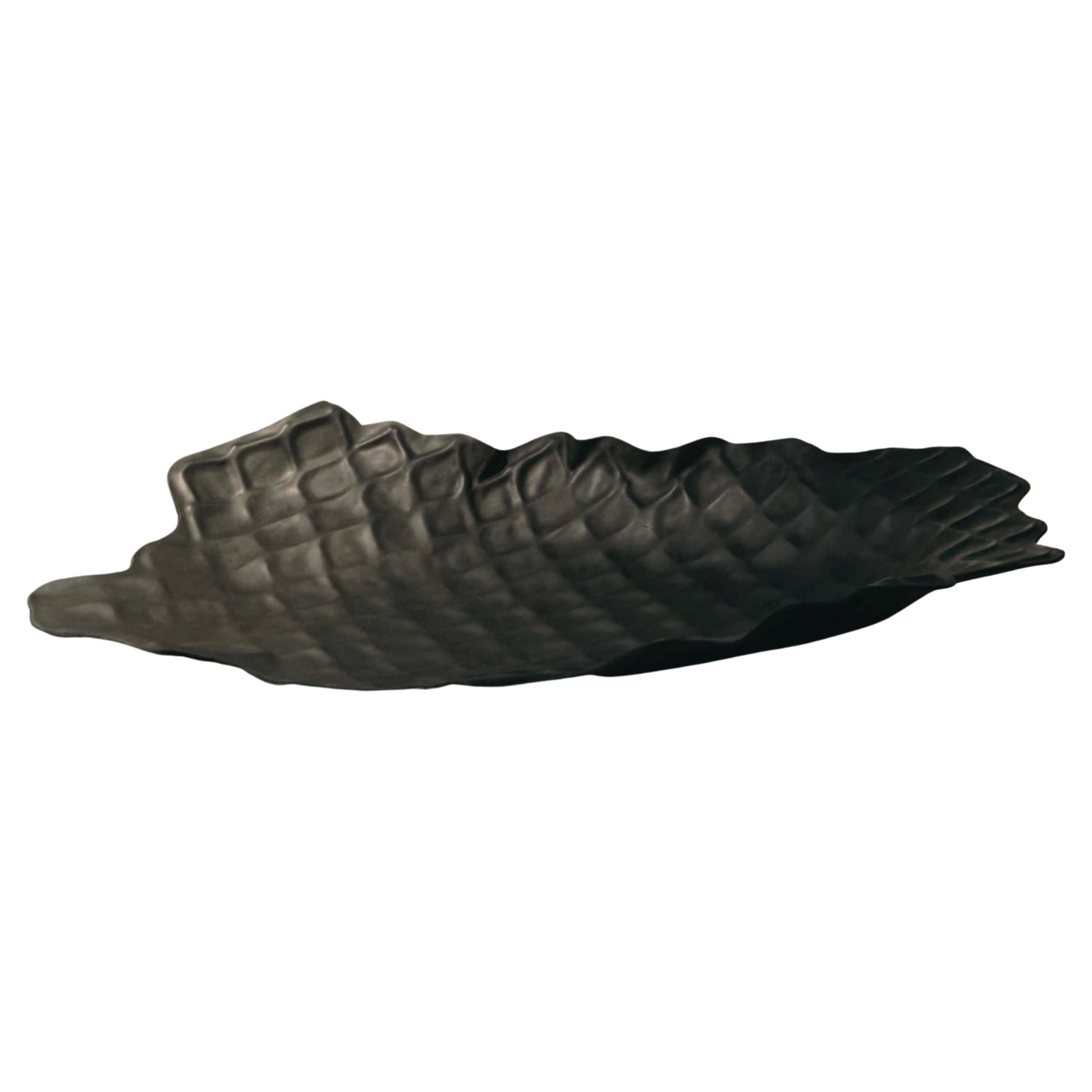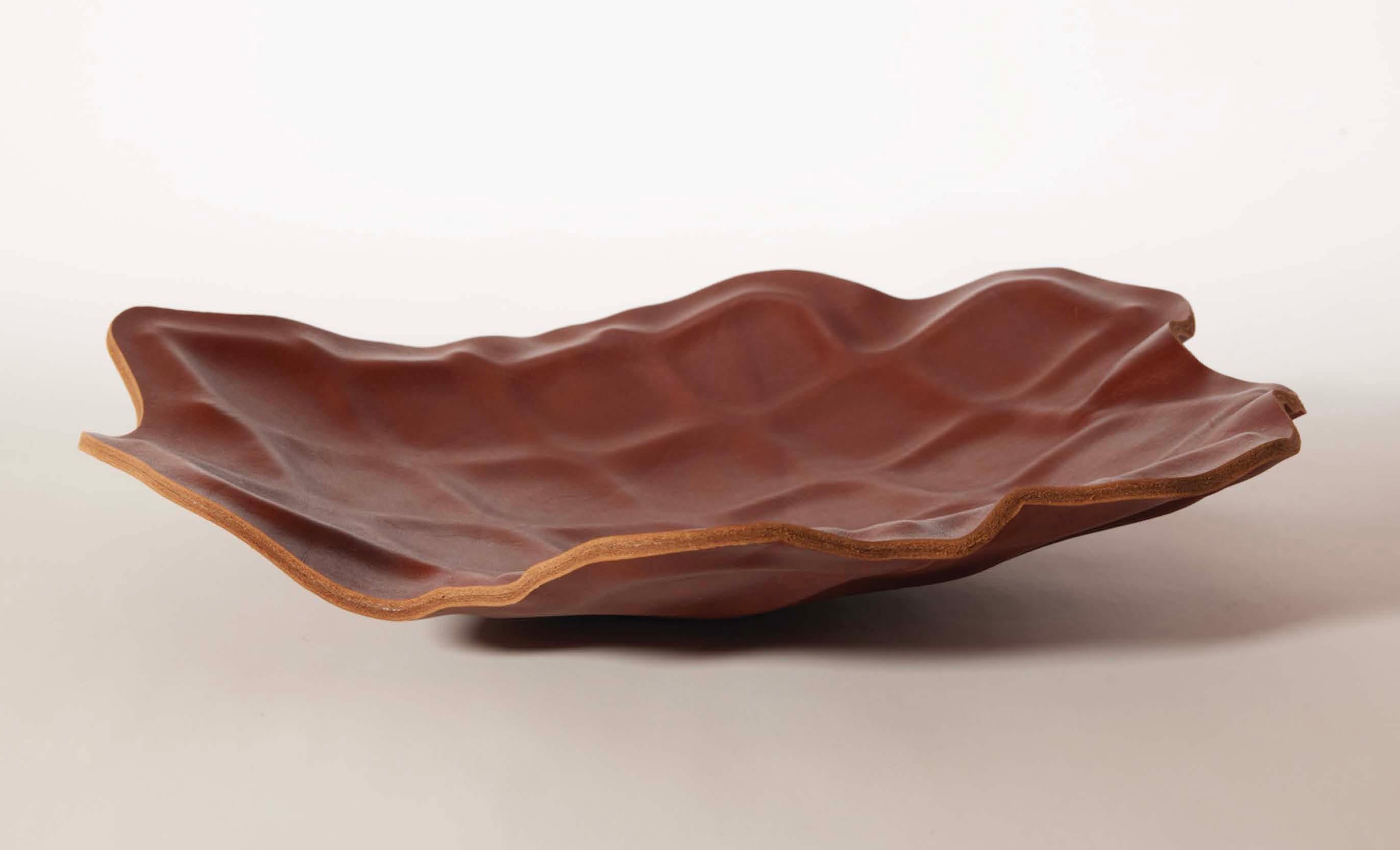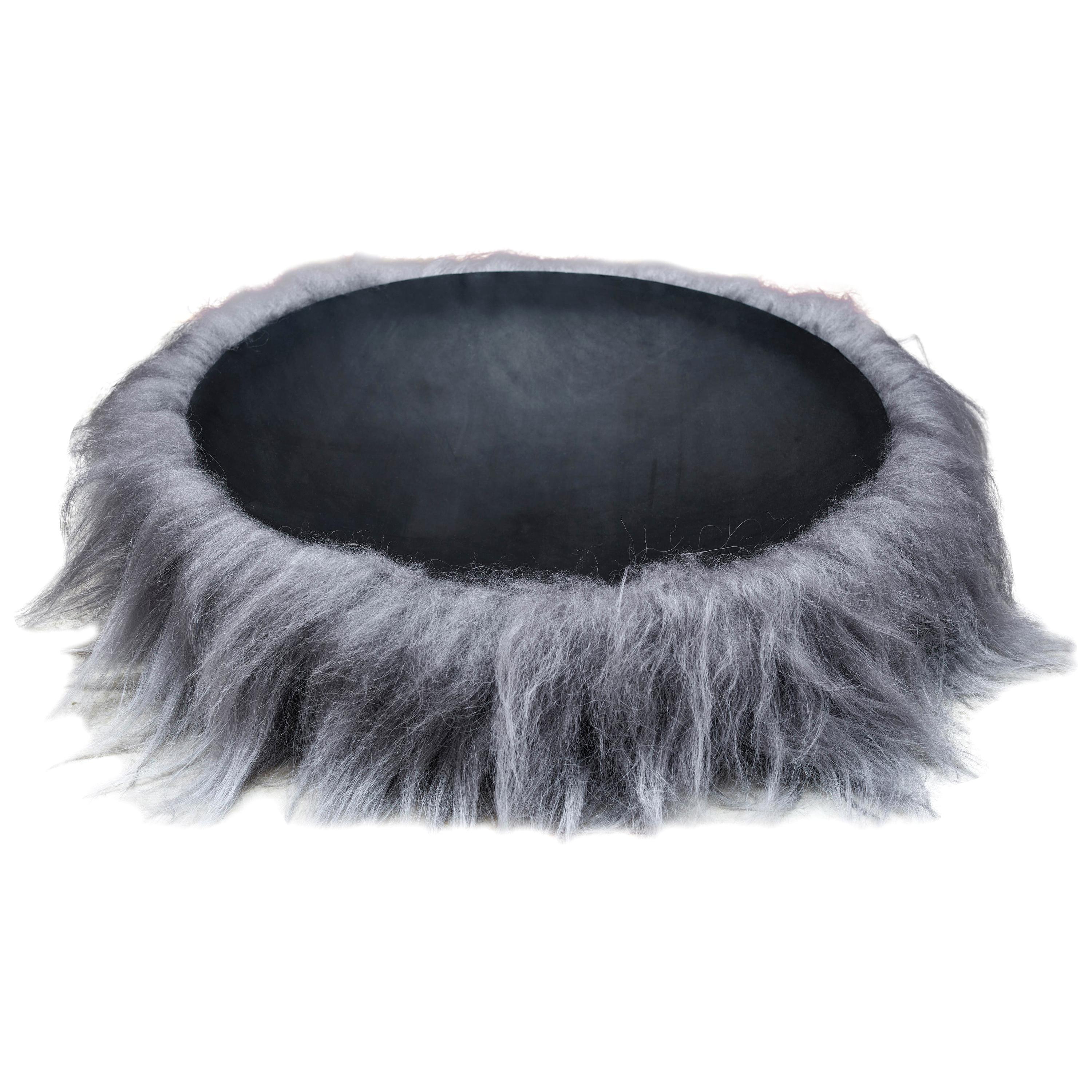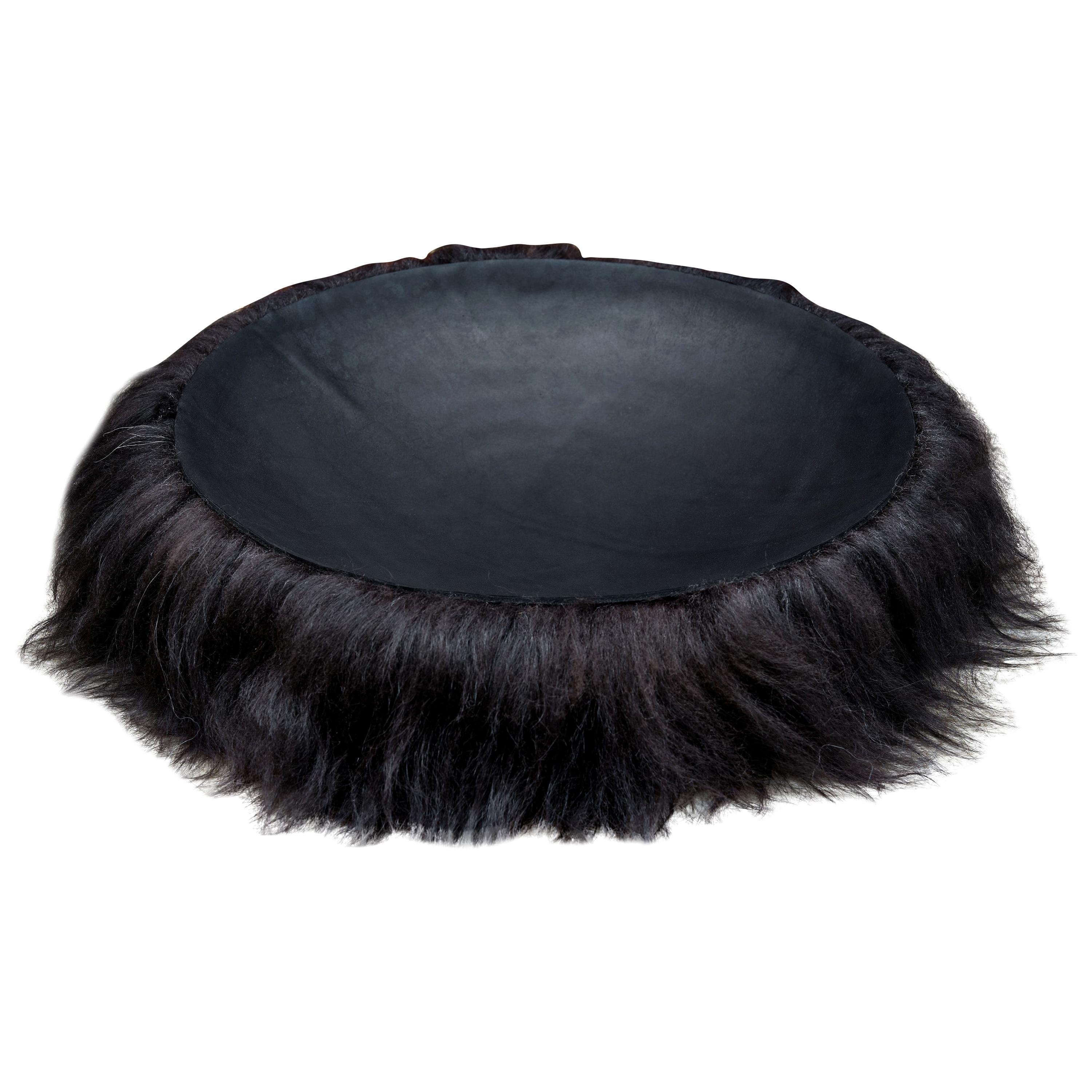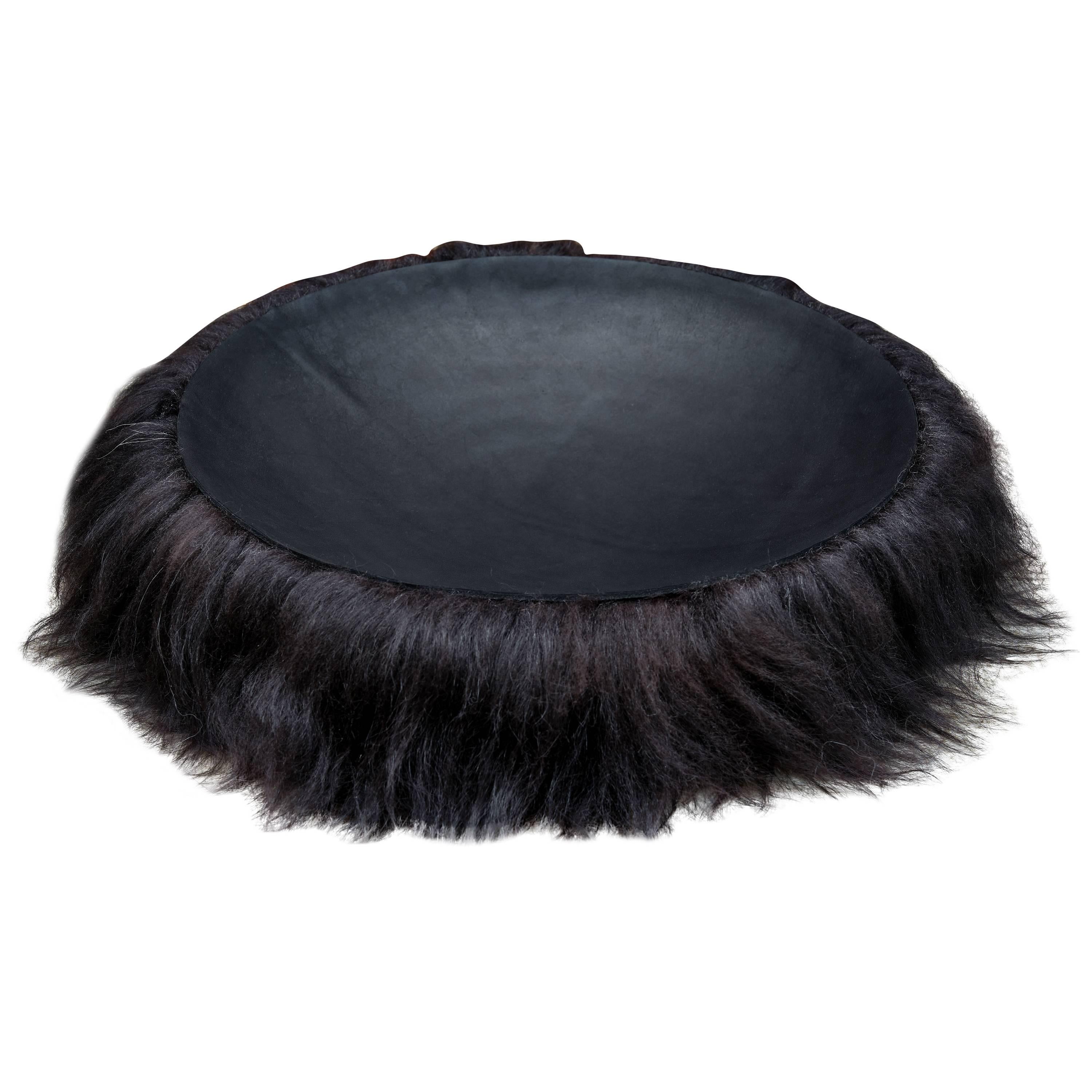Items Similar to 'Partu' Italian Leather Medium Vessel by Trent Jansen & Johnny Nargoodah
Want more images or videos?
Request additional images or videos from the seller
1 of 6
'Partu' Italian Leather Medium Vessel by Trent Jansen & Johnny Nargoodah
About the Item
‘Partu’ is the Walmajarri word for ‘skin’ and is Johnny Nargoodah and Trent Jansen's latest collaborative project experimenting with this combination of disparate sensibilities. Found materials and leather are used to create awareness about Material Culture and recycling.
This collection was developed in Thirroul on the New South Wales Coal Coast. Johnny and Trent came together four times over a period of 18 months, developing new methods for collaboration that could shape their incongruent knowledge, methods, and skills in designing and making into co-authored outcomes. These methods include: ‘Sketching exchange’, a process of back-and-forth sketch iteration, allowing an IDEA to evolve with equal input from both creators; and ‘designing by making’, a method of working with materials at full scale, to design an object as it is being made. In this approach the prototype is the sketch and both collaborators work together to carve, construct and/or manipulate material, giving the object three-dimensional form as they design and make simultaneously.
Trent Jansen & Johnny Nargoodah
Partu (Skin) Collection
Ngumu Janka Warnti (All Made from Rubbish) Chair, 2020
New Zealand Leather, Aluminum
Measures: 90H x 50W x 60D cm, 35H x 20W x 24D in.
- Creator:Trent Jansen (Artist)
- Dimensions:Height: 24.8 in (63 cm)Width: 22.1 in (56.14 cm)Depth: 4.3 in (10.93 cm)
- Materials and Techniques:
- Place of Origin:
- Period:
- Date of Manufacture:2022
- Production Type:New & Custom(Limited Edition)
- Estimated Production Time:4-5 weeks
- Condition:
- Seller Location:Beverly Hills, CA
- Reference Number:1stDibs: LU5588228458722
About the Seller
5.0
Vetted Seller
These experienced sellers undergo a comprehensive evaluation by our team of in-house experts.
Established in 2014
1stDibs seller since 2021
24 sales on 1stDibs
Typical response time: 10 hours
- ShippingRetrieving quote...Ships From: Rockdale, Australia
- Return PolicyThis item cannot be returned.
More From This SellerView All
- 'Partu' Italian Leather Large Vessel by Trent Jansen & Johnny NargoodahBy Trent JansenLocated in Beverly Hills, CA‘Partu’ is the Walmajarri word for ‘skin’ and is Johnny Nargoodah and Trent Jansen's latest collaborative project experimenting with this combination of disparate sensibilities. Foun...Category
2010s Australian Tableware
MaterialsAluminum
- 'Partu' Italian Leather Small Vessel by Trent Jansen & Johnny NargoodahBy Trent JansenLocated in Beverly Hills, CA‘Partu’ is the Walmajarri word for ‘skin’ and is Johnny Nargoodah and Trent Jansen's latest collaborative project experimenting with this combination of disparate sensibilities. Foun...Category
2010s Australian Tableware
MaterialsAluminum
- 'Partu' Italian Leather Cabinet by Trent Jansen & Johnny NargoodahBy Trent JansenLocated in Beverly Hills, CA‘Partu’ is the Walmajarri word for ‘skin’ and is Johnny Nargoodah and Trent Jansen's latest collaborative project experimenting with this combination ...Category
2010s Australian Cabinets
MaterialsAluminum
- 'Partu' Italian Leather Side Table by Trent Jansen & Johnny NargoodahBy Trent JansenLocated in Beverly Hills, CA‘Partu’ is the Walmajarri word for ‘skin’ and is Johnny Nargoodah and Trent Jansen's latest collaborative project experimenting with this combination of disparate sensibilities. Foun...Category
2010s Australian Side Tables
MaterialsAluminum
- 'Partu' Italian Leather Coffee Table by Trent Jansen & Johnny NargoodahBy Trent JansenLocated in Beverly Hills, CA‘Partu’ is the Walmajarri word for ‘skin’ and is Johnny Nargoodah and Trent Jansen's latest collaborative project experimenting with this combination of disparate sensibilities. Foun...Category
2010s Australian Coffee and Cocktail Tables
MaterialsAluminum
- Saddle Vessel Tall by Trent Jansen & Johnny NargoodahBy Trent JansenLocated in Beverly Hills, CAJohnny Nargoodah and Trent Jansen have been collaborating in the design and crafting of collectible furniture since they met in Johnny’s hometown of F...Category
2010s Australian Abstract Sculptures
MaterialsBrass
You May Also Like
- Hairy Wild Man from Botany Bay Bowl Grey by Trent JansenBy Trent JansenLocated in Beverly Hills, CABroached monsters by Trent Jansen The vast majority of mainstream Australian mythology commonly used as a foundation for Australian identity is culturally exclusive. Both Indigenous myths, including post-colonial myths and precolonial dreaming stories, and non-indigenous Australian myths, including the bush legend, ANZAC tradition and convict legend, focus on the historical role that the race of authorship has played in building the nation. However, a contemporary understanding of Australian history acknowledges the contribution of both Indigenous and non-indigenous Australians in forging the nation, and the national identity which accompanies it. Instead of perpetuating the same exclusive national myths, perhaps Australians should adopt a national mythology that acknowledges this inclusive understanding of Australian history, a mythology that unites Australians of many backgrounds under a shared Australian identity. In his book on Australia’s Folklore of Fear, Robert Holden explores pre-colonial ideas of Australia as a Great Southern Land – an imaginary landmass conjured up to counterbalance the continents in the northern hemisphere, as far removed as possible from Britain, the center of the Christian world (Holden, 2001). Holden speaks of Australia as an imaginary world, occupied by unimaginable creatures and monsters. Holden is commenting in part on the mythical creatures that originated in both British and Aboriginal Australian folklore and were shared by the Aboriginal and non-Aboriginal inhabitants of Sydney during the early years of colonisation. Stories of the yahoo, a creature that resembled a slender man, with long white straight hair, extraordinarily long arms and great talons (Unknown 1842), captured the imaginations of the new British settlers, and soon a fear of the yahoo became a common ground between Aboriginal people and British settlers. is fear of a gruesome and vicious creature gained its potency from the folkloric tales that were used to substantiate its existence. These tales were suitably vague, their lack of detail attributed to the fierce nature of these creatures and the assumption that no one had survived an encounter (Holden, Thomas et al. 2001). The yahoo “became one of the very few Aboriginal legends to be embraced by the Europeans” (Holden, Thomas et al. 2001, p16), providing a catalyst for conversation between individuals from these two culturally disparate societies and forming some personal links between these communities. Could creature myths like the yahoo once again form the foundation of a united national...Category
21st Century and Contemporary Australian Decorative Bowls
MaterialsAluminum
- Hairy Wild Man from Botany Bay Bowl Black by Trent JansenBy Trent JansenLocated in Beverly Hills, CABroached Monsters by Trent Jansen The vast majority of mainstream Australian mythology commonly used as a foundation for Australian identity is culturally exclusive. Both Indigenous myths, including post-colonial myths and precolonial dreaming stories, and non-indigenous Australian myths, including the bush legend, ANZAC tradition and convict legend, focus on the historical role that the race of authorship has played in building the nation. However, a contemporary understanding of Australian history acknowledges the contribution of both Indigenous and non-indigenous Australians in forging the nation, and the national identity which accompanies it. Instead of perpetuating the same exclusive national myths, perhaps Australians should adopt a national mythology that acknowledges this inclusive understanding of Australian history, a mythology that unites Australians of many backgrounds under a shared Australian identity. In his book on Australia’s Folklore of Fear, Robert Holden explores pre-colonial ideas of Australia as a Great Southern Land – an imaginary landmass conjured up to counterbalance the continents in the northern hemisphere, as far removed as possible from Britain, the center of the Christian world (Holden, 2001). Holden speaks of Australia as an imaginary world, occupied by unimaginable creatures and monsters. Holden is commenting in part on the mythical creatures that originated in both British and Aboriginal Australian folklore and were shared by the Aboriginal and non-Aboriginal inhabitants of Sydney during the early years of colonization. Stories of the yahoo, a creature that resembled a slender man, with long white straight hair, extraordinarily long arms and great talons (Unknown 1842), captured the imaginations of the new British settlers, and soon a fear of the yahoo became a common ground between Aboriginal people and British settlers. is fear of a gruesome and vicious creature gained its potency from the folkloric tales that were used to substantiate its existence. These tales were suitably vague, their lack of detail attributed to the fierce nature of these creatures and the assumption that no one had survived an encounter (Holden, Thomas et al. 2001). The yahoo “became one of the very few Aboriginal legends to be embraced by the Europeans” (Holden, Thomas et al. 2001, p16), providing a catalyst for conversation between individuals from these two culturally disparate societies and forming some personal links between these communities. Could creature myths like the yahoo once again form the foundation of a united national...Category
21st Century and Contemporary Australian Decorative Bowls
MaterialsAluminum
- Hairy Wild Man from Botany Bay Bowl White by Trent JansenBy Trent JansenLocated in Beverly Hills, CABroached Monsters by Trent Jansen The vast majority of mainstream Australian mythology commonly used as a foundation for Australian identity is culturally exclusive. Both Indigenou...Category
21st Century and Contemporary Australian Decorative Bowls
MaterialsAluminum
- Salt, Pepper and Sugar Shaker Set by Johnny Mattsson, Sweden, 1950sBy Johnny MattssonLocated in Stockholm, SESalt, pepper and sugar Shaker set in solid teak designed by Johnny Mattsson for Upsala Slöjd in the 1950s. Scandinavian modern classic in excellent condit...Category
Vintage 1950s Swedish Scandinavian Modern Tableware
MaterialsTeak
- Compote Vessels by Mugly, NYC Handmade in BrooklynLocated in Brooklyn, NYMugly NYC is a Brooklyn based ceramic studio specializing in richly textured sculptural clay and porcelain that evoke the poetics of the handmade. These Compote Vessels were handm...Category
2010s Tableware
MaterialsCeramic, Pottery, Clay
- Set of 3 Primitive Terracotta Heating Vessels by ArtefaktoLocated in Geneve, CHSet of 3 Primitive Terracotta Heating Vessels by Artefakto Unique pieces. Dimensions: Ø 25 cm x H 44/40/38 cm. Materials: Terracotta. Set of 3 sculptural elements. Northern Pu...Category
2010s Mexican Modern Tableware
MaterialsTerracotta
Recently Viewed
View AllMore Ways To Browse
Silver Australia
Carved Glass Co
Four Kitchen Chairs
Italian Kitchen Chairs
Leather Kitchen Chairs
Exchange Chair
Silver Aluminum Chair
New Zealand Carved
Johnny Nargoodah
Ngumu Janka
Kitchen Carving Knives
Fruit Salad
Shell Silver Service
Sterling Silver Large Soup Spoons
Dinner Service Set French
Antique Dinner Knives
China Set For 12
Retro Fork And Knife
